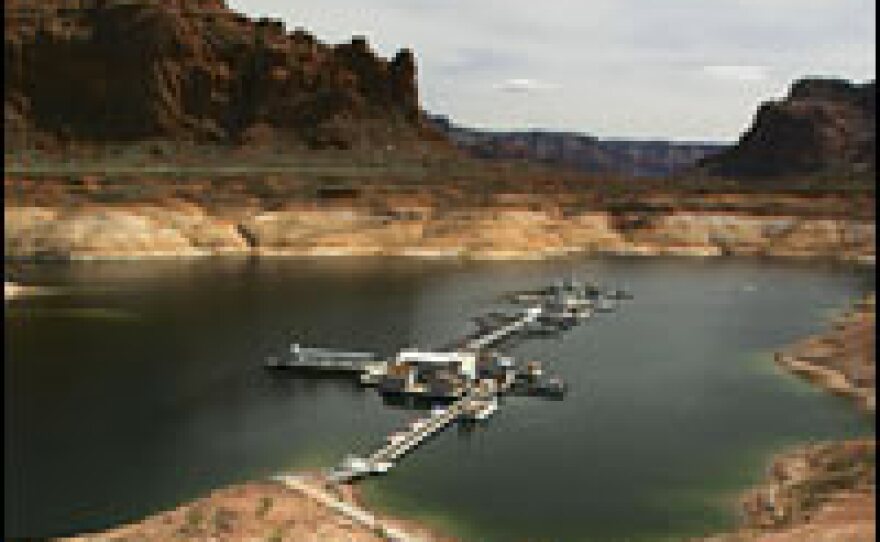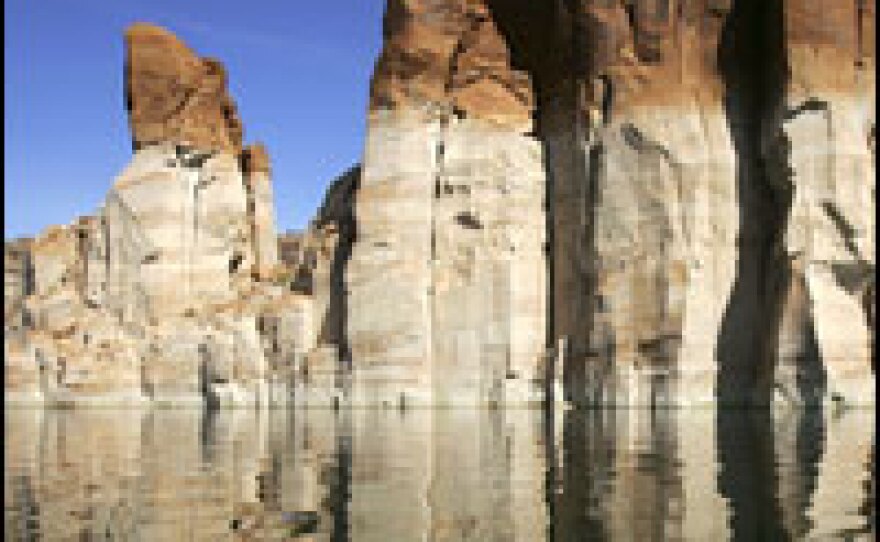
Wahweap Marina is on the shore of Lake Powell, in the middle of nowhere on the Arizona-Utah border. It's hot here. You can feel the 90-degree sun baking on your neck. To get here, you have to drive through miles of desert, sagebrush and red sandstone cliffs. Then you crest a hill, and Lake Powell spreads out below you, like a digitized blue mirage.
There's a huge concrete boat ramp that looks like an airport runway jutting down into the lake at about a 30-degree angle. It's a lot longer than it was just a few years ago. The ramp has been extended as the lake level has dropped. The drought in the Southwest has taken its toll on this man-made lake. The reservoir is now half empty.
Across the bay, huge sandstone cliffs tower along the lake's edge. As the water level has dropped, it has left a chalky, white residue behind on the canyon walls — sort of like a ring around a bathtub. And that bathtub ring is now 100 feet high above where boaters now cruise along the surface of the lake.
Still, there's a lot of water here and a constant stream of people coming to enjoy it — launching ski boats, taking out Jet Skis and WaveRunners, fishing boats and giant houseboats.
Paul Toft from Prescott, Ariz., is on a long pier that juts into the lake. Toft says he hasn't seen the water level this low before. He remembers 20 years ago, when the water table was way up. He says he's concerned because he has noticed that the water level has dropped another foot or so since he last observed it.
"But down there where I'm from," Toft says, "they just don't seem to care, they just keep building and using more water all the time, and sooner or later it's going to be all gone."
Lake Powell is the second-largest reservoir in the country. It took 17 years to fill after water started backing up behind Glen Canyon Dam in 1963. It has taken only about 8 years for half that water to disappear.
Daniel Kraker is a reporter for member station KNAU.
Copyright 2022 NPR. To see more, visit https://www.npr.org. 9(MDAzMjM2NDYzMDEyMzc1Njk5NjAxNzY3OQ001))






